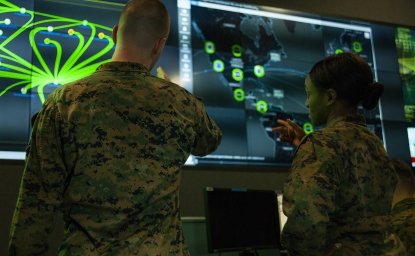
A blog of the Indo-Pacific Program
One of the minilateral security initiatives emerging out of Southeast Asia over the past few years has been the new trilateral cooperation mechanism for managing a range of transnational challenges in the Sulu Sea between Indonesia, Malaysia, and the Philippines. With the mechanism expected to continue to take shape into 2019 as well, it is worth asking where it stands as well as the opportunities and challenges that lie ahead for it.
As I have observed before, while headlines about maritime security in the Indo-Pacific tend to focus primarily on waterways such as the South China Sea or the Indian Ocean, the Sulu-Sulawesi Seas–or more specifically, the one million square kilometer tri-border area in the Sulu-Sulawesi Seas between the southern Philippines, Indonesia, and Malaysia–deserves more attention. The tri-border area both facilitates the cross-border movement of millions of people and ships each year and is ridden with conflict, crime, and poverty, making it a key hub for transnational organized crime and terrorist threats.
Attention to the area has grown somewhat over the past few years due to the efforts by Philippines, Indonesia, and Malaysia to foster greater trilateral collaboration among themselves to address these challenges. Following intensifying discussions after a spate of kidnappings of nationals by militant groups in mid-2016, collaboration took shape as the Trilateral Cooperative Agreement (TCA) in 2017 and into 2018, with maritime and air patrols, the setting up of hubs for operations in each country, and the gradual integration of observer countries such as Singapore and Brunei.
Through 2018, officials from all three countries...have expressed their sense that there has been some reduction in cross-border crimes as the scope of activities has gradually increased.
While it is still early days, there are indications that the TCA is having some effect thus far. Through 2018, officials from all three countries collectively as well as individually have expressed their sense that there has been some reduction in cross-border crimes as the scope of activities has gradually increased, albeit with some continued delays. In September 2018, when the three defense ministers met in Manila, they also pointed to some success in this respect as well, while also flagging areas for further progress such as enhancing coordination between maritime command centers, boosting information sharing, and building out the land patrol component of cooperation in addition to the air and sea.
There is also some incoming data that backs up the general sense given by policymakers. To take just one example, data just released in the annual report issued by the Regional Cooperation Agreement on Combating Piracy and Armed Robbery Against Ships in Asia (ReCAAP) shows that there has indeed been a decrease in recorded incidents of transnational crime related to the Sulu Sea in 2018, with three incidents compared to seven incidents in 2017. The report explicitly notes the reduction of incidents in the area as a trend, even as it maintains that it will continue to be a challenge that remains for the foreseeable future.
This should not detract from the broader point that any limited success so far notwithstanding, the trilateral mechanism’s effectiveness ought to be qualified by broader considerations. Among them is the fact that previous instances of reductions in transnational crimes in the Southeast Asian context, including the Malacca Straits, have at times proven to be reversible. Data on observed incident reductions related to the Sulu Sea also ought to be analyzed with the proper caveats, including the small sample size and the fact that measurements of these known incidents represent just part of the fuller universe of cases that may have actually occurred.
While the reductions in these incidents can help stem initial fallout, their true success will come if countries themselves use the time, space, and energy they have to devote to managing or resolving other root causes of the transnational challenges.
More broadly, these patrols are only part of the effort to address the problem. Any evaluation of the success of these patrols ought to take into account the fact that the root causes of the transnational challenges they ought to address, and the conflict, crime, and poverty seen in the area more generally, have to do with a range of non-security issues in these countries themselves, which range from unevenness of development to the lack of governance to persistent corruption. While the reductions in these incidents can help stem initial fallout, their true success will come if countries themselves use the time, space, and energy they have to devote to managing or resolving other root causes of the transnational challenges. Otherwise, any meaningful success will be short-lived.
All this is not to diminish the value of the TCA itself, whose emergence so far has defied the expectations of some cynics who had dismissed it out of hand given the challenges involved. But it is to say that as this mechanism becomes more entrenched as one of several in the region, we ought to continue to pay attention not just to the rhetoric of officials, but the reality of how it is affecting the very challenges it was designed to help address, and impacting the broader calculations of these countries beyond just the carrying out of individual exercises and engagements.
Image: Lano Lan / Shutterstock.com
Follow Prashanth Parameswaran, Asia Program Global Fellow, on Twitter @TheAsianist.
The views expressed are the author's alone, and do not represent the views of the U.S. Government or the Wilson Center. Copyright 2018, Asia Program. All rights reserved.
Author

CEO and Founder, ASEAN Wonk Global, and Senior Columnist, The Diplomat

Indo-Pacific Program
The Indo-Pacific Program promotes policy debate and intellectual discussions on US interests in the Asia-Pacific as well as political, economic, security, and social issues relating to the world’s most populous and economically dynamic region. Read more





